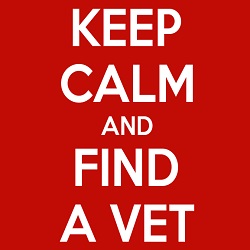Toplines – A Short-course Introduction

Toplines – A Short-course Introduction
By
Fred Lanting, USA
(The author is an all-breed judge for several registries, and a well-known GSD authority.)
There are several misconceptions about toplines and the terms used to describe them as well as how they look different when trotting vs standing. First, we have different definitions of “roach”—a very common term used by GSD detractors, but erroneously. A roached topline is one that (seen in a standing dog) rises from the withers to some point in the thorax-lumbar region, before falling off again in the vicinity of the pelvis. Look at some “overdone” Borzois and, less-commonly, some Greyhounds—if you can still find any. Think of a camel when you talk about a roach in canine toplines. In a true roach, there is a region in the topline between shoulder and pelvis that is actually higher. My challenge remains: with that definition, show me a picture of a free-standing dog with a roach!
What people are actually looking at when they misuse that word, is a two-angled or excessively-sloping topline behind the withers (scapulae). It has been a big and common problem in GSDs after the early 1960s. Some of these dogs have a noticeable break in what von Stephanitz and the Breed Standard called the correct, level back—and remember, the true back-plus-loin starts at the rear end of the withers/scapulae and ends at the ilium of the pelvis. It is that part between the bones of the limbs (shoulder blades and pelvis). While there is almost no truly straight line in anatomy, that impression should be given in several parts of the body (such as muzzle, forearm, metatarsus, lower thigh). As much as we purists might want to see a return to a truly level back, we should be much more adamant about returning to the impression of a straight line, rather than the excessive curve or the two-angled look.
That broken-back appearance varies. Some dogs seem to have the sharp break in the topline flow very soon after the withers, others have the noticeable break further back. Some are relatively minor, some truly ugly. Either is fodder for the more vociferous detractors of the modern typical GSD, and I fully understand their angst. What they are complaining about is the most visible, obvious problem that even the most novice observer can see. But there may be equally serious deviations from functional structure and the description in the Standard that they miss. It is easy to see toplines or color, but it takes more education and attention to see the less-obvious but perhaps just as important problems.
As an example: in the UK, there have long been complaints by the “Alsatian-type-GSD” fanciers about the persistently wrong “broken” or “ski-slope” topline. But they generally ignore the complaint from the other side that too many “Alsatians” resemble Dachshunds because of the ratio of their chest depth and shorter legs. Both groups need to reeducate themselves as much as seek understanding from the other. The photo below left shows the top winners in the Crufts (UK) competition in 2004. Ignore the poor posing of the “Germanic-style” dog’s hindquarters. Note instead the ratio of torso depth to total height and to space under the dogs. The dog at left has correct rear angulation while the dog at right has an incorrect nearly horizontal tibia (lower thigh). There is between a 50/50 and a 55/45 ratio of withers-to-underline in one, but noticeably greater ratio in the other dog. The 1986 Sieger shows the desirable 50/50 ratio (the impression of a “knick” in his topline is caused by a slight tension on the leash).

Now look at the accompanying picture of a recent WUSV top winner named Ballack v.d. Brucknerallee. In spite of the SV not giving placing numbers to the top 13 VA (excellent-select) adult males in 2014, fanciers are going to think of him as the Sieger anyway, since he was in front at the final moments of the competition. A handsome, powerful dog, but like any dog he has his faults when you compare him to the official Standard. The proportions of height at withers (directly vertical above the point of the elbow) to chest depth there are not quite what the Standard calls for. We see too much chest and not enough leg, instead of the ideal range of 50/50 (example: Okar Karthago) to 45/55 chest depth to foreleg length ratio. Even when Breed Standards do not spell this out clearly, as in the GSDCA and The KC versions, fanciers (and judges!) ought to aim for that ideal.

Now compare the front of Ballack’s picture with the radiograph-based illustration made by Rachel Paige Elliott of a well-constructed dog, and concentrate on the area of the withers from T1 (first thoracic vertebra) to T2 or T3, where you can feel the tops (“spines”) of the first two or three vertebrae in the thorax. Ignore the almost vertical head-neck carriage of the radiographed dog—that’s only a matter of posing the dog. The forward vertical line in each picture represents where many registries such as AKC measure a dog’s height and where the scapulae are level with or slightly higher than the vertebrae. The second line represents where the SV measures height at withers (vertically above the point of the elbow), and is where you can feel the tops of the T3 vertebra and beyond, unless palpation is inhibited by heavy muscling such as is found in most Rottweilers and similar robust mastino types.

Next, I call your attention to the photo of Ballack in full-extension fast trot (above, lower right). Good balance of front (shoulder/arm) angulation with considerable rear angulation and fairly long second thigh is part of the reason such a dog can pull ahead of the competition at high speeds. But much of the reason is also training the dog to do so without breaking stride into a gallop. I have trained many a GSD to do this. The great sable Timo Berrekasten was also conditioned to pull out ahead of the competition without breaking from the trot, and if he had been allowed to lead the pack in 2001, he would have floated away from the pack; instead, he was held back by the B&T dog the judge decided to lead the running. Much of the reason for Timo’s second place VA-2 was that his coat-color/pattern was not all that popular.
Another thing you should notice in that photo of Ballack gaiting is that the withers (tops of shoulder blades) is lower than the back immediately behind. With full extension (reach)—and increasing with speed—a well-constructed dog who stands with withers higher than the back will trot with the withers lower. The powerful propulsion of the rear limbs will throw the torso more forward than upward, so that the dog will appear to keep a level backline from rear of the scapulae to beginning of the croup. Try this: get on your hands and knees, then extend one arm forward and the other rearward as far as you can—you will notice your shoulders drop in comparison with your back. Better yet, take slow-motion films of dogs trotting faster and faster.
The trotting dog, as it increases speed, will lower its head until the neck is approximately horizontal. This, along with the lower withers at faster gait, may give the novice non-analytical observer the impression that the dog is “running downhill” or is not constructed properly, but these dogs’ toplines should be evaluated in stance, not the fast trot. Another problem for judges (and other observers) with the ultra-fast trot is many a dog will be on the verge of breaking stride into a gallop. I’ve seen this in the case of an often-viewed video of Ballack in which he looks like he is about to come apart in pieces, especially from mid-torso back. Fortunately, the current leadership of the SV (Dr. Messler) is inhibiting the flashy super-fast gait during competition.
One final word about the relationship of T1 and T2 position to the scapulae: you might be able to see it in the picture below of the “African painted dog” (Lycaon pictus) which is not really a dog but is a canid native to Sub-Saharan Africa, distinguished from Canis lupus or Canis familiaris by its dentition and fewer toes, and not being genetically compatible such. A picture of that Lycaon illustrates the scapula corresponding to the weight-bearing limb is above the vertebrae, and the top of the scapula on the limb that is being lifted seems to be below the top of the shoulder blade. You might be able to see the non-weight-bearing scapula on your dog dip a little as it reaches forward an instant before putting the foot on that side down. Or just as it picks it up to start putting it ahead of the weight-bearing one.
About the Author: Fred Lanting is an internationally respected show judge, approved by many registries as an all-breed judge, has judged numerous countries’ Sieger Shows and Landesgruppen events, and has many years experience as one of only two SV breed judges in the US. He consults and presents seminars worldwide on such topics as Gait-&-Structure, HD & Other Orthopedic Disorders, and The GSD.










